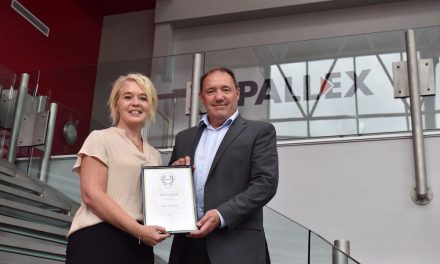 Paul Davies of Rockwell Automation explains how to achieve optimum machine safety using the different stages of the ‘Safety Lifecycle’
Paul Davies of Rockwell Automation explains how to achieve optimum machine safety using the different stages of the ‘Safety Lifecycle’
1. Risk or Hazard Assessment
Risk assessment is required under the Machinery Directive and the Use of Work Equipment Directive in the EMEA regions and by other standards across the globe. Within the standards for electrical controls, risk assessment helps to determine the appropriate protective measure required for an application, for example, redundancy.
All safety related control functions are determined by risk assessment which helps select the correct functional performance.
All international electrical control standards refer to or require risk assessment to verify the adequacy of the machine control system. As existing standards are updated and new standards emerge there will be more emphasis on conducting risk assessments.
Hazard Assessments: these are an inexpensive way to audit a machine/work cell to determine the obvious points of operation and power transmission hazards. The result of the hazard assessment is a report that identifies the location of each observed hazard and can, if required, provide a rough budgetary estimate for safeguarding.
CE Mark & PUWER Assessments: each CE marking directive gives ‘essential health and safety requirements’ that a product must meet before it can be sold in the EU. Rockwell Automation offers a service to help ensure that products meet applicable directive(s) before sale. A PUWER assessment will be similar but targeted to the existing machines and the Essential Health and Safety Regulations it must meet.
A good risk assessment from a safety partner should provide, as a minimum:
• A repeatable process that can help improve machine safeguarding and act as a guide towards achieving regulatory compliance.
• Clarification of safeguarding requirements and definition of the appropriate control circuit architecture and safety performance level needed for compliance.
• Documented evidence of intent to produce a safer product or workplace.
• A baseline that can be referenced during periodic inspections of the machine to help ensure all safeguards are still implemented and working properly. As production dictates changes in machine operations, previous risk assessments can be quickly updated to reflect any new hazards and mitigation plans associated with the modification.
• Identification of hazardous situations that may be missed by using any other method of risk assessment.
• The framework to create a positive staff attitude around machine safety. By involving technicians in the safeguarding process, they can better understand why a machine needs to be guarded in a particular manner and therefore, may be more likely to accept the new safeguard.
2. Functional Requirements
Identifying and understanding the functional requirements of the machine or process and then planning the risk reduction is a key stage of the life cycle. The main elements that a safety partner should provide are:
• Training clients on hazard identification and the risk assessment process.
• Providing assistance with interpretation of standards and documentation of assessments.
• Working with clients to develop a plan for reducing risk to an acceptable level.
• Turnkey risk assessment facilitation and report generation.
• The overall experience of this process provides a platform for a greater understanding of functional safety requirements and may lead to a more formalised requirement for safety training and qualifications within the company.
3. Design & Verification
This is the stage of the Safety Lifecycle where the risk assessment and functional requirements are turned into a functional design specification which is verified as reaching the correct level of conformity. This stage should:
• Assure compliancy of system architectures and designs.
• Evaluate the safety circuit integrity.
• Provide a third party evaluation and letter of conformance.
4. Installation & Validation
A good safety partner can help to provide safety systems controls, equipment integration management and commissioning services as part of the management of the project.
Other services which can be utilised include on-site training, preventative maintenance programs and field service.
5. Maintain & Improve
The Safety Lifecycle is not simply complete when the machines are installed and validated. They must be maintained correctly to remain compliant, and opportunities to improve the safety of your operation should be taken where possible.
In the Safety Lifecycle this means a new cycle can begin for a machine or process due to intelligence gathered during the ‘Maintain & Improve’ stage.
A safety partner can help here too, as a strong service offering would include field support engineers to assist maintenance staff with preventive and reactive tasks, call-out services, extended parts and labour warranty, preventive maintenance services, and an embedded engineer to perform reactive and preventive tasks in continuous support of your maintenance department.






